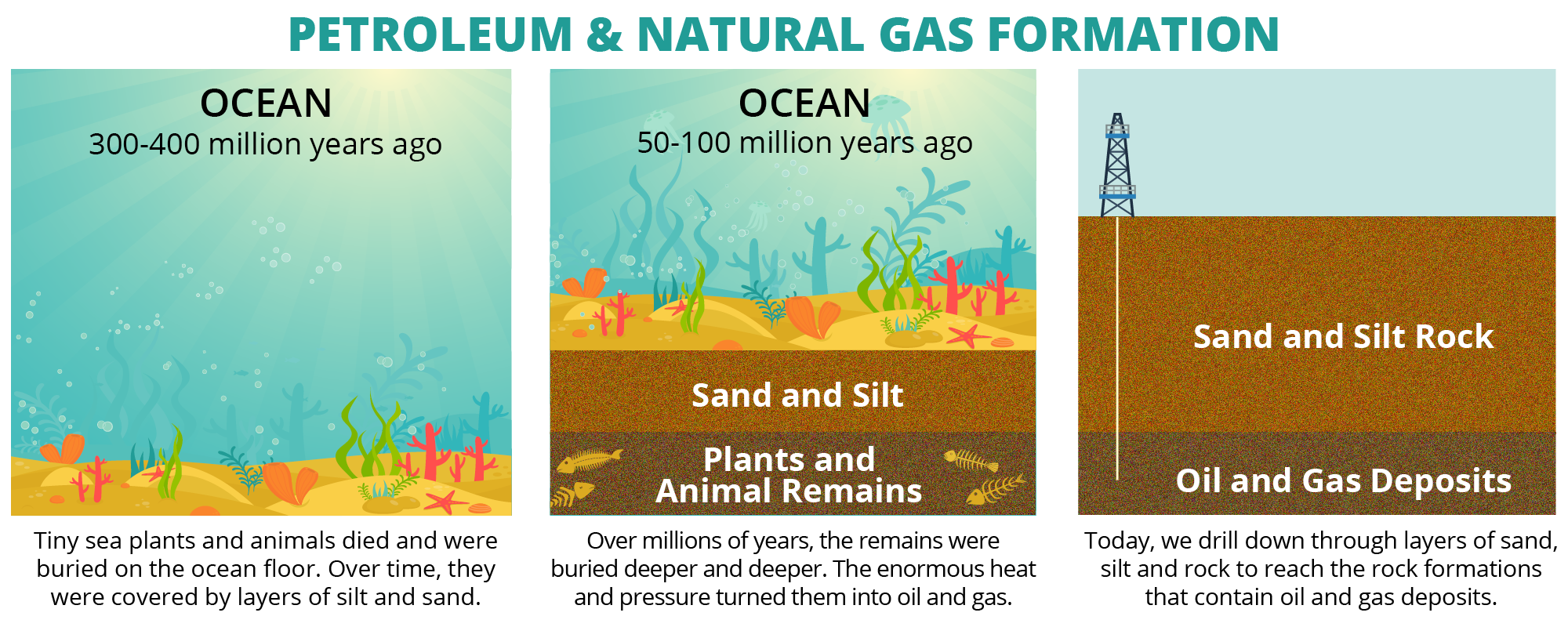Students
On this page you can find all kinds of great information and activities about natural gas. You can do the activities with your friends, your class or on your own.
And, as always, stay Safe and Smart!
On this page you can find all kinds of great information and activities about natural gas. You can do the activities with your friends, your class or on your own.
And, as always, stay Safe and Smart!
Think you are a natural gas expert? Read the information below and take the natural gas quiz.
Normally, natural gas is odorless and colorless; you can’t see it and you can’t smell it. The added smell is a compound called “mercaptan” and it smells like rotten eggs. But it’s there for a reason: to keep you safe. If natural gas leaks under certain conditions, it can build up and possibly catch fire. Scientists and utility companies add the “rotten egg” smell so you know when it is leaking.
If you smell that “rotten egg” smell in your house, GET OUT right away. Don’t call anyone or turn on or off any lights or appliances. Just GET OUT. Any spark from an electrical appliance or smart phone could cause the natural gas to ignite. The best thing to do is to GET OUT, then tell an adult or call 911 and CenterPoint Energy. They can clear the area and make sure everyone is safe as the problem is dealt with.
Natural gas is what is called a “pure hydrocarbon”. It is a gas made up mostly from carbon and hydrogen. Pure hydrocarbons burn blue. “Pure” may be a bit misleading as there are small amounts of nitrogen, oxygen and other chemicals in natural gas. Other examples of pure hydrocarbons are: propane, methane and acetylene. “Burning blue” usually only happens under perfect conditions. If any soot, dust or other pollutants are present, then the flame can be both yellow and blue. You see this in some stovetops or ranges when the stove or oven is dirty. The yellow flame of a candle is due to the burning of soot given off by the flame itself.
The main ingredient in natural gas is methane, a gas (or compound) composed of one carbon atom and four hydrogen atoms. Millions of years ago, the remains of plants and animals (diatoms) decayed and built up in thick layers. This decayed matter from plants and animals is called organic material—it was once alive. Over time, the sand and silt changed to rock, covered the organic material, and trapped it beneath the rock. Pressure and heat changed some of this organic material into coal, some into oil (petroleum) and some into natural gas—tiny bubbles of odorless gas.

The search for natural gas begins with geologists, who study the structure and processes of the Earth. They locate the types of rock that are likely to contain gas and oil deposits. Today, geologists’ tools include seismic surveys that are used to find the right places to drill wells. Seismic surveys use echoes from a vibration source at the Earth’s surface (usually a vibrating pad under a truck built for this purpose) to collect information about the rocks beneath.
Scientists and engineers explore a chosen area by studying rock samples from the earth and taking measurements. If the site seems promising, drilling begins. Some of these areas are on land but many are offshore, deep in the ocean. New horizontal and directional drilling techniques make it possible to produce more natural gas from a single well than in the past, so fewer wells are needed to develop a natural gas field. Once the gas is found, it flows up through the well to the surface of the ground and into large pipelines. The wellhead* natural gas is then sent to a processing plant where any impurities are removed to so it can be distributed through pipelines throughout the United States. The number of stages and the type of techniques used to create pipeline-quality natural gas depend on the composition of the natural gas produced at the well.
Most of the natural gas consumed in the United States is produced in the United States. Some is imported from Canada and sent to the United States in pipelines.
*A wellhead is the component at the surface of an oil or gas well that provides the structural and pressure-containing interface for the drilling and production equipment.
Liquefied natural gas (LNG) is natural gas that has been cooled to about -260°F for shipment and/or storage as a liquid. The volume of the liquid is about 600 times smaller than in its gaseous form. In this compact form, natural gas can be shipped in special tankers to terminals in the United States and to other countries. At these terminals, the LNG is returned to a gaseous form and transported by pipeline to distribution companies, industrial consumers and power plants.
Source: www.eia.gov/kids/energy.cfm?page=natural_gas_home-basics
Natural gas is usually in its gaseous state, but if it is cooled to -260 degrees Fahrenheit, the gas changes into a liquid called Liquefied Natural Gas (LNG). This liquid form of natural gas can be stored or transported to areas around the world easily because this form is 1/6 the size of the natural gas in its gaseous state. Once the liquid gas reaches its destination, it can be turned back into a true gas and used for heating, cooling and making electricity.